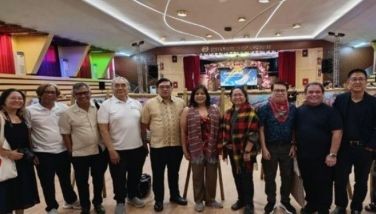Green recovery to bring in investments into Southeast Asia
MANILA, Philippines — Pursuing a green recovery from the pandemic in Southeast Asian countries can generate $172 billion worth of investment opportunities annually and create over 30 million jobs in the region by 2030, the Asian Development Bank (ADB) said.
In a new report titled “Implementing a Green Recovery in Southeast Asia,” which has the Philippines, Cambodia, Indonesia, Myanmar and Thailand as its focus countries, the multilateral institution said a green recovery approach from the pandemic is crucial for the region to achieve an economically and environmentally resilient future.
“While several countries in the region have begun to support a green recovery, more needs to be done,” ADB director general for Southeast Asia Ramesh Subramaniam said during a webinar organized by ADB and ISEAS – Yusof Ishak Institute for the report yesterday.
“We must encourage additional green stimulus, design carbon pricing schemes, reduce dependence on fossil-fuel intensive power, and attract private sector investors to large-scale renewable energy, sustainable transport, and clean urban projects,” he said.
To help governments in Southeast Asia pursue a green recovery, ADB’s report identified five areas offering opportunities such as productive and regenerative agriculture; sustainable urban development and transport models; clean energy transition including the development of renewable energy projects and enhancing the efficiency of energy use across various sectors; circular economy models; and healthy and productive oceans.
“If leveraged fully, the five green growth opportunities would require approximately $172 billion in capital investment and can create 30 million jobs in Southeast Asia by 2030,” ADB said.
“These growth opportunities also align with almost 60 percent of the United Nations’ Sustainable Development Goal targets,” the multilateral institution said.
In the area of productive and regenerative agriculture which will involve transforming agricultural landscapes and farming practices to improve yields while enhancing surrounding natural ecosystems, ADB said specific opportunities include the use of emerging technologies such as big data analytics and the internet of things to support precision agriculture applications; farming practices that reduce greenhouse gas emissions such as rotational grazing; rotating crops and reducing tillage to replenish soil nutrition; as well as micro-irrigation to reduce water usage and run-off.
ADB said there are major risks in not taking advantage of the opportunities in this space given the agriculture sector’s contribution to the five focus countries’ economy and employment.
In particular, the sector accounts for 10 percent of the gross domestic product of the Philippines, eight percent of Thailand’s, 13 percent of Indonesia’s, 21 percent of Cambodia’s, and 23 percent of Myanmar’s.
In terms of employment, the sector’s share is at 23 percent for the Philippines, 28 percent for Indonesia, 31 percent for Thailand and Cambodia, and 49 percent for Myanmar.
“Not harnessing greater productivity efficiencies in this sector could thereby result in significant economic opportunity costs,” ADB said.
In terms of sustainable urban development and transport models, ADB cited opportunities including better-planned urban developments; developing sustainable public transport systems and last-mile connectivity like multimodal public transport systems, corridors for active mobility like walking and cycling paths; electric vehicle adoption; and promoting ride sharing.
As for clean energy transitions, ADB said Southeast Asian countries can look at facilitating the phase-out and early retirement of coal-red power plants, scaling up renewables and storage, developing interconnected grids, and saving energy through demand-side energy efficiency measures.
In terms of a circular economy or a model of production and consumption where raw materials and components are used for as long as possible, opportunities include investments and policies that support the processing of waste into usable and valuable end products across various sectors.
ADB said the Philippines currently has industry specific initiatives in this space, particularly in food processing and construction, but the country lacks an integrated circular economy plan.
To have healthy and productive oceans, ADB said Southeast Asian countries will need to have sustainable management of wild fisheries by ensuring biologically viable fishing levels and improving and scaling sustainable mariculture and aquaculture to replenish overexploited stocks.
ADB also identified other policy options in the report which include stepping up research on green technologies, encouraging women entrepreneurs to participate in green business opportunities, and managing biodiversity better through open and integrated data systems.
To implement a green recovery, ADB said Southeast Asian governments will need to identify sustainable sources of financing for climate-friendly infrastructure investments and to take advantage of green growth opportunities.
It said financing approaches should include mobilizing domestic resources through environmental and carbon taxes, reducing subsidies for fossil fuels, mobilizing private investors by addressing risks related to green investments, and leveraging public and private finance through green funds such as the Association of Southeast Asian Catalytic Green Finance Facility.
It also cited the need to have stronger collaboration among neighboring economies and to establish partnerships with various stakeholders for the benefits to be felt throughout the region.
- Latest
- Trending





























